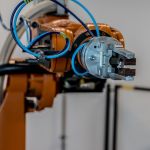
Artificial muscles and sensors for robots
Age suitable for:
- 11 - 14 years-old
- 14 - 16 years-old
- 16 - 18 years-old
- 18+ years-old
When we look at the machines and robots in today's world, they are generally rigid, made of hard materials and using hard motors. In contrast, our own muscles, organs, and sensors in the skin are soft. Why is this? Are there advantages to softer materials? And what will the machines and robots of the future be like? Come and find out!
In this interactive exhibit, meet Dr Hareesh Godaba and researchers from the Bioengineering Group, as they show you how advanced, soft materials can enhance the ability of our robots and machines.
Come and see how artificial muscles (also called actuators) made from rubber can expand when an electric voltage is applied to them - a technology that is making possible new robots inspired by creatures like inchworms, which show highly versatile locomotion.
Witness sensors that, much like the human skin, can not only detect multiple touch points but also estimate how much pressure is applied at each point. This technology will help humans to communicate with robots and machines more intuitively using touch as a medium.
These new materials and technologies could solve many challenges in industry, healthcare, medicine and more - and you can see them in action today!
In this interactive exhibit, meet Dr Hareesh Godaba and researchers from the Bioengineering Group, as they show you how advanced, soft materials can enhance the ability of our robots and machines.
Come and see how artificial muscles (also called actuators) made from rubber can expand when an electric voltage is applied to them - a technology that is making possible new robots inspired by creatures like inchworms, which show highly versatile locomotion.
Witness sensors that, much like the human skin, can not only detect multiple touch points but also estimate how much pressure is applied at each point. This technology will help humans to communicate with robots and machines more intuitively using touch as a medium.
These new materials and technologies could solve many challenges in industry, healthcare, medicine and more - and you can see them in action today!
You may also like

Code your own Robot!
This unique activity will give you the opportunity to get hands-on with autonomous robots, and discover the world of navigation and control. Place yourself in the shoes of a roboti ...Read More
Highfield Campus

Real-time audio effects
Audio effects are a must-have part of many devices we use every day. But what do they really do? Explore our real-time audio signal processing demonstrator! With a simple s ...Read More
Highfield Campus
 - v2.jpg)
